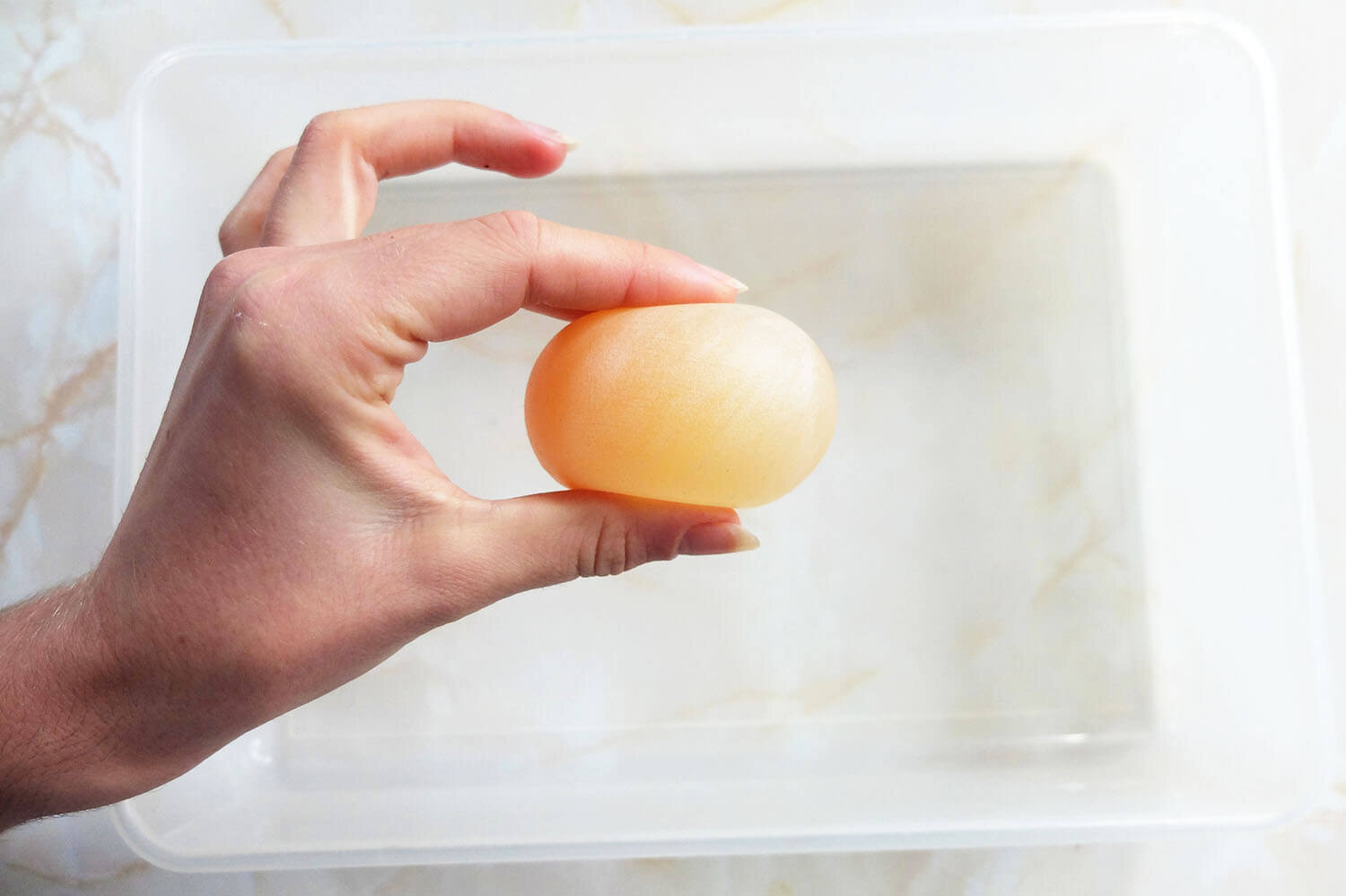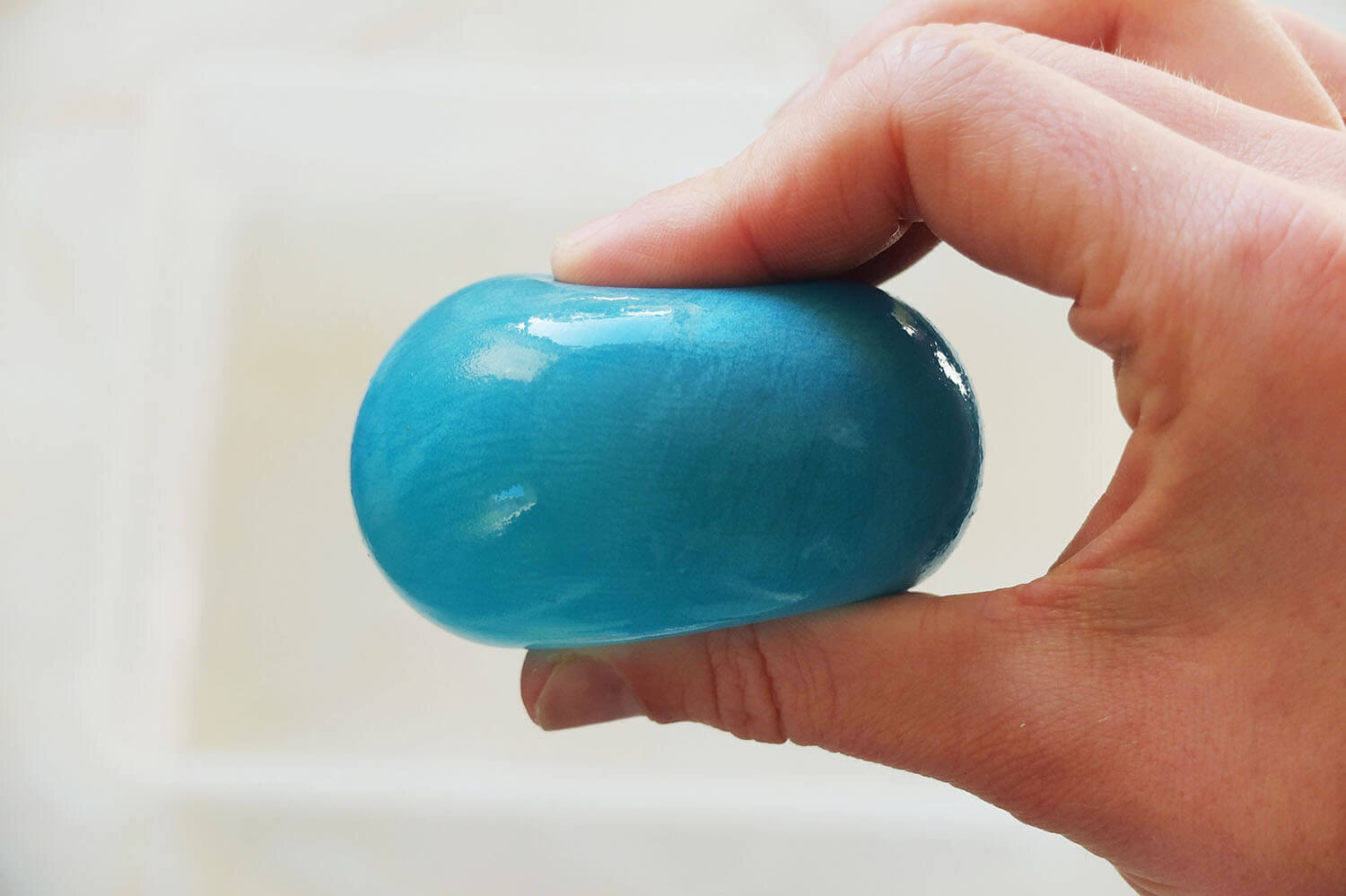Rubber Egg Experiment
Turn a whole, uncooked egg into a bouncy rubbery egg, with this fun egg-periment…
Turn a normal, everyday egg into a bouncy rubber egg using readily available home ingredients and learn how a chemical reaction works!
What you need:
One egg
White vinegar
One jar
What to do:
Carefully place the egg into the jar.
Cover the egg with vinegar and then leave it for at least 24 hours.
After at least 24 hours, carefully take the egg out of the vinegar by pouring the vinegar out and catching the egg in your hand.
Wash the egg under a tap, while gently rubbing off any excess bits of shell, to reveal your bouncy egg.
If some of the shell won’t rub off then cover it with fresh vinegar and leave it for one more day.Try dropping your bouncy egg onto a table just a few centimeters in the air and see how it bounces like a bouncy ball.
You can also shine a torchlight through it and see the yellow yolk!
Extra Ideas:
Colour your egg
Add 10 drops of food colouring to the vinegar, before soaking your egg, and it will dye your rubber egg.Grow and shrink your egg
Make your bouncy egg bigger by putting it in a glass of water for a day.
Why does the egg get bigger? The water passes through the membrane and into the egg, to keep the amount of water on the inside and outside the membrane equal.
Shrink your egg by putting it in a liquid like corn syrup which has low water content.
Top Tip: Making the water a different colour makes it easy to see if the liquid has passed into the egg when we break it.
What we learn:
Why does the egg shell dissolve?
Soaking the egg in vinegar starts an acid-base reaction.
Eggshell is mainly made of calcium carbonate (which is a base) and the vinegar is an acid. This reaction makes the eggshell dissolve.
The acid base reaction produces calcium acetate, water and carbon dioxide. The bubbles you see on the eggshell in the vinegar is a sign of the carbon dioxide you have created.What keeps the egg together without its shell?
When you have washed the shell off your egg, the only thing keeping the raw egg inside is the membranes of the egg.
There are two membranes in an egg, an outer and an inner membrane, they are made of proteins and protect the inside of the egg from bacterial infections. The membranes are very thin and can easily be broken but it is stretchy enough to let your egg bounce from a small height.What is yolk and albumen?
If you look through the membranes you will be able to see the egg white (albumen) and the yolk. The albumen gives protection and protein to the embryo and is made up of 90% water and also consists of proteins.
The yolk is the embryo’s main source of nutrition proteins, vitamins, minerals, fat and water.
Did you give it a go?
Did you try making your own bouncy egg a go? Send us a photo of what you created, and some words about what you learnt, and you’ll go into the draw to win a mystery “Upstart DIYer” prize.







